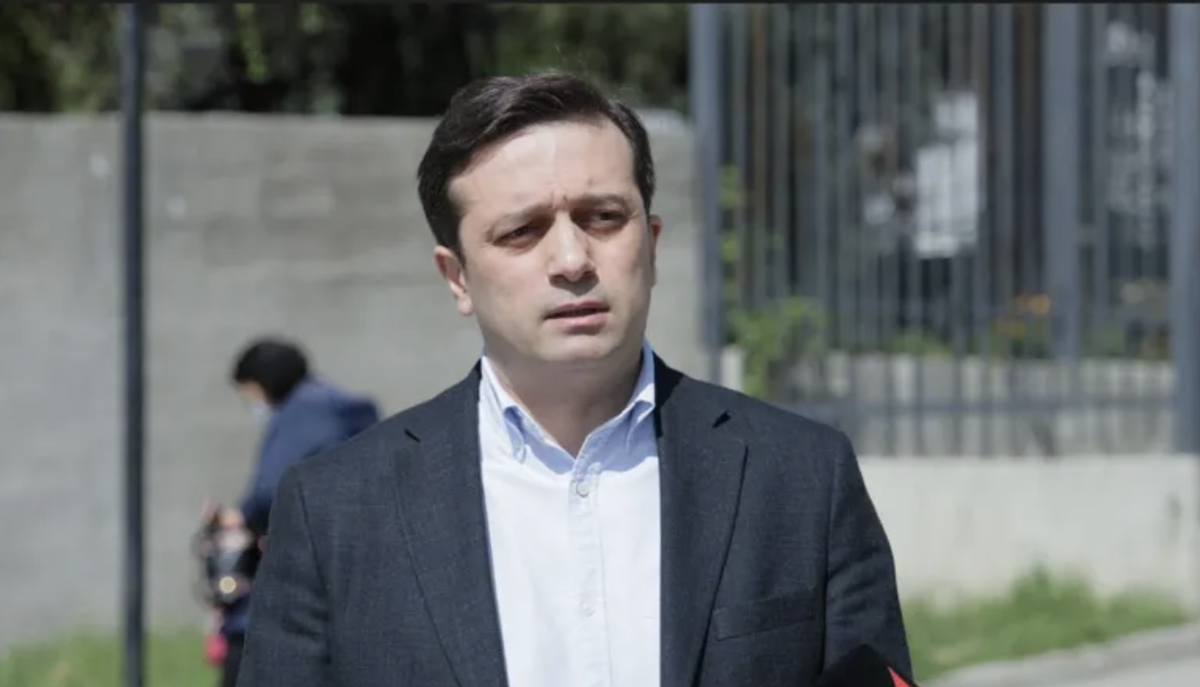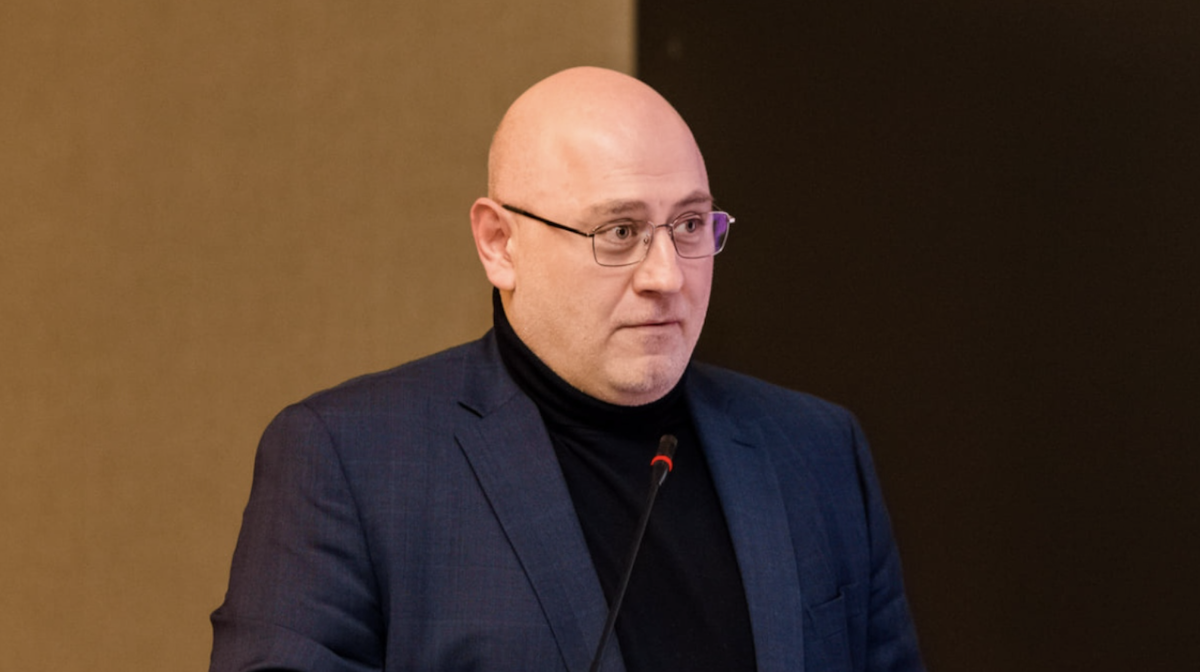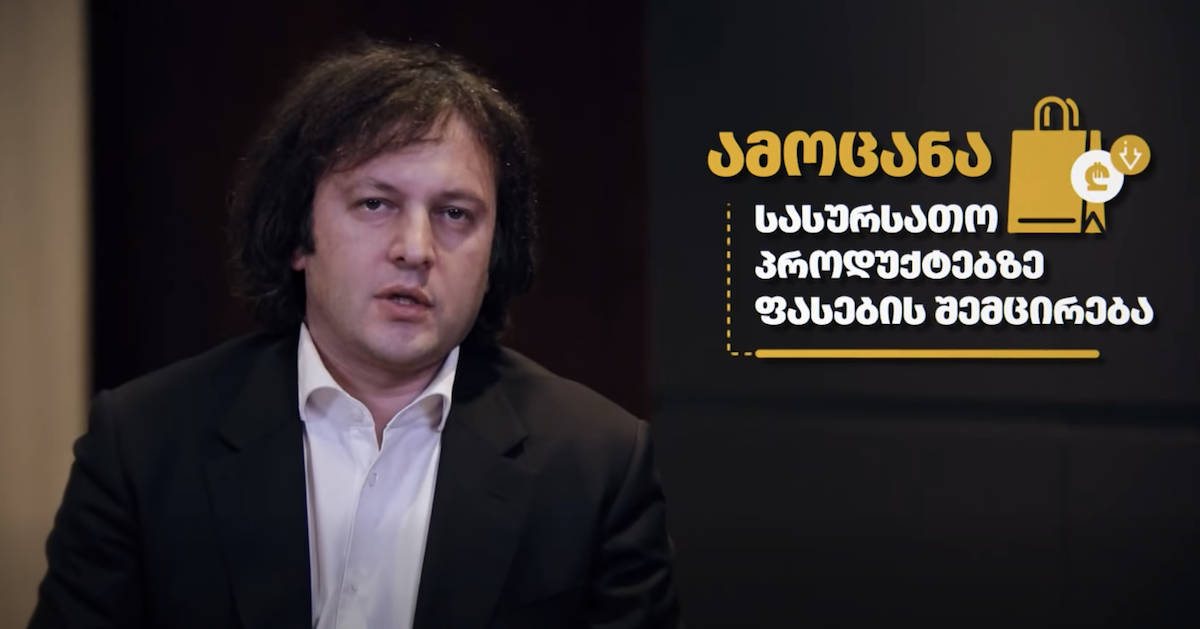Ukraine's bold gamble: Early impact of Kursk offensive
Ukrainian Armed Forces’ offensive in the Kursk region
The advance of the Armed Forces of Ukraine in Kursk Oblast has been making the headlines of the world’s leading media for more than a week. No one seems to have expected such a step from Ukraine. Although the military goals of the large-scale operation are still hidden in the fog of war, its political achievements are already taking shape.
While the Ukrainian army is taking control of Russian towns and villages, China is cautiously calling on “the parties to the conflict to refrain from escalation,” and Western countries are pretending that nothing extraordinary is happening. Meanwhile, the Kremlin is frantically searching for a way to localize the situation without stopping its offensive in eastern Ukraine.
Read the article by hromadske to learn how the Kursk operation threatens the stability of the Putin regime, whether it is possible to exchange territories with Russia, and how this offensive is changing the attitude of Kyiv’s partners to the war.
How did the Russians overlook the Ukrainian offensive?
The Ukrainian offensive was prepared in complete secrecy. The military and political leadership did everything possible to mislead the Russians and make a breakthrough when the enemy did not expect it. But how could they hide a grouping of thousands of troops with equipment on the border with the enemy?
In May, the head of the Main Intelligence Directorate, Kyrylo Budanov, said that the Russians might open a front in Sumy Oblast for the second time. The spy chief voiced a similar warning in July, a few weeks before the Ukrainian offensive.
Finally, a week before the invasion of Russian territory, President Volodymyr Zelenskyy complained in an interview with the French newspaper Le Monde that the Ukrainian Armed Forces lacked soldiers. And out of the 14 new brigades that had already been prepared, he said, only three could be manned, all because of a lack of weapons.
Thus, in early August, the impression in the information field was that Ukraine had no offensive potential, and that any accumulation of forces on the border with Kursk Oblast of Russia was an organization of defense in case of a new enemy invasion.
As the ancient Chinese thinker Sun Tzu said: “Appear weak when you are strong, and strong when you are weak.”
Meanwhile, in the form of “regular” defensive actions, the Ukrainian Armed Forces conducted a series of preparatory maneuvers: from innovative electronic warfare measures and their own preliminary reconnaissance to systematic artillery strikes against enemy logistics facilities, such as weapons depots and oil depots.
How significant is success on the battlefield?
Overnight on August 5, Ukrainian troops entered Kursk Oblast. The Russian military leadership was unprepared for this development. The effect of surprise allowed the Ukrainian Armed Forces to advance quickly – in just 10 days, the offensive managed to capture about as much territory as the Russians themselves occupied in Ukraine in the entire year of 2024.
Initially, Russian propagandists claimed that it was just a “border provocation” and the actions of saboteurs. Soon, they had to admit that the Ukrainian Armed Forces were in fact conducting an offensive, but the Russian army had allegedly already repelled it and was “clearing up.” However, after almost a week of fighting, on August 12, even Vladimir Putin publicly “learned” that the Ukrainian army had advanced more than 10 kilometers deep into Kursk Oblast. Interestingly, President Zelenskyy confirmed the Kursk operation for the first time on the same day.
On August 13, Ukrainian Armed Forces Commander-in-Chief Oleksandr Syrskyi reported to the head of state that 74 settlements and about 1,000 km² of Russian territory were under the control of Ukrainian troops. By comparison, the Russians themselves managed to capture 11 Ukrainian villages and 184 km² of Ukrainian territory during a large-scale offensive in Kharkiv Oblast that began on May 10. In total, since the beginning of 2024, the enemy has occupied approximately 1,000 km².
The Ukrainian Armed Forces themselves took control of more Russian territory in 10 days than they were able to liberate Ukrainian territory during the counteroffensive in 2023, when the Defense Forces regained control of 395 km² of Ukrainian land in the south and east of the country.
It is worth noting that the operation is still ongoing, so we cannot draw even preliminary conclusions about which frontier the Ukrainian Armed Forces will decide to gain a foothold on and whether they will be able to hold it.
Some Western analysts believe that now, after the rapid breakthrough phase, the Ukrainian forces will move to the “success development” phase, i.e., they will continue to cover their flanks, create a strong defense line, and level it. However, the prospect of Ukrainian commanders deciding to take advantage of the Russians’ passivity and move even further into Russian territory is not excluded. Therefore, the territorial indicators of the Kursk offensive are not a measure of success, but rather a sign of the situation that the Ukrainian Armed Forces have managed to create.
Nevertheless, there is already an obvious result: the Ukrainian military has captured a record number of Russians who will be useful for a potential exchange – in particular, for the Azovstal defenders. For example, according to The Independent, about 2,000 Russian soldiers have already surrendered to Ukrainian forces during the fighting in Kursk Oblast.
This failure of defense in Kursk Oblast has eventually baffled the Kremlin and forced it to hastily seek forces to stop the Ukrainian offensive. So far, they have been trying to plug the hole with units of the Russian Guard, the FSB, and not yet fully trained reservists. However, they are currently unable to provide resistance to the several thousand-strong grouping of the Ukrainian Armed Forces.
Therefore, Kyiv’s asymmetrical actions are pushing Moscow to withdraw combat-ready units from eastern Ukraine, where the Russians have been conducting a successful offensive since last fall. According to military expert Mykhailo Samus, the Kursk offensive may be part of a broader strategic-level operation that should turn the tide of the war. When the Russians withdraw a significant part of their forces from Ukraine, conditions may arise in the weakened areas for counteroffensive actions by the Defense Forces on the territory of Ukraine.
Ukrainian Armed Forces’ offensive in the Kursk region
Will Ukrainian troops be able to hold on to Russian territory?
At present, the Russians are trying to stop the advance of Ukrainians in Kursk Oblast with little blood, keeping powerful groupings on the Donetsk and Kharkiv axes. Obviously, Vladimir Putin either still does not consider the situation on the border as critical, or he deliberately decided not to sacrifice the offensive in eastern Ukraine,” Mykhailo Samus, a military analyst and director of the New Geopolitics Research Network, explained in an interview with hromadske.
This is a completely wrong decision from a military point of view, as these forces are not enough. Indeed, now Russian forces can create separate points of resistance and strike at our positions. However, their units are not sufficient for concentrated attacks to, for example, threaten our flanks or completely stop the frontal advance of Ukrainian troops.
Mykhailo Samus, military analyst
In the meantime, several thousand Ukrainian troops with modern Western weapons are establishing themselves on new frontiers deep in Russian territory and have even set up a military commandant’s office.
“The Kursk offensive has cut off several important logistics routes that the invasion forces used to support their army. In addition, the loss of control over the Sudzha district destabilizes Russian military logistics in the neighboring Belgorod Oblast,” said American military analyst Trent Telenko.
The two key railway marshalling yards for the Russian Army in occupied Ukraine are in Belgorod and Rostov-on-Don. And Belgorod railway marshalling yard just got cut off from the north. Rerouting train traffic like this hasn’t happened in Russia since 1941.
Trent Telenko, American military analyst
Ignoring the Ukrainian offensive threatens its further development to the northeast, where the Kursk Nuclear Power Plant is located. Cutting it off from the energy system of the southern regions would be a real disaster for the Russians.
Nevertheless, analysts consider this scenario unrealistic, as the KNPP is more than 30 kilometers from the current positions of the Ukrainian Armed Forces, which seems too far in today’s war. At the same time, such proximity of the foreign army to the strategic facility of the Russian Federation adds to the information pressure and allows for the conduct of psyops, which stirs up panic in the society of the aggressor state.
Ukrainian Armed Forces’ offensive in the Kursk region
Is the stability of Putin’s regime under threat?
The Kursk operation of Ukrainian troops has indeed demonstrated the ineffectiveness of the Russian military and political leadership. The Kremlin reacted nervously and with a significant delay to the breach of its border. At an emergency meeting of the Russian Security Council, Vladimir Putin announced the start of a counter-terrorist operation in three regions: Kursk, Belgorod, and Bryansk.
Even some Russian propagandists joke about the Kremlin’s addiction to using three-letter abbreviations: first there was the SVO (“special military operation”), and now there is the KTO. This once again demonstrates Putin’s unwillingness to admit that his country has unleashed a full-fledged war – even when the fighting has already come to the internationally recognized territory of the Russian Federation. “According to Vladimir Putin’s rhetoric, the ‘terrorist regime in Kyiv’, like the ‘terrorist regime in Chechnya’ in its time, allegedly attacked the peaceful territory of Russia,” explains journalist and publicist Vitaliy Portnikov in an interview with hromadske.
“On the other hand, the KTO regime actually limits the leakage of information from the border regions, and also allows blocking the departure of residents from these regions,” Portnikov notes.
The KTO regime gives the Kremlin full information control over the situation. Thus, Putin is creating an oprichnina, which will exist in a completely extra-legal regime. The security forces will have almost unlimited powers. The KTO regime is the creation of a state within a state. We have already seen this during the war in the North Caucasus.
Vitaliy Portnikov, political commentator
The fact that the territory of the Russian Federation is turning into a full-fledged theater of operations may help to develop the image of Ukrainians as enemies within Russia, but it is hardly worth considering. Without transferring the war to the aggressor’s side, there can be no question of its defeat, says Portnikov. The political observer is convinced that the more such operations the Ukrainian Armed Forces conduct on Russian territory, the closer the day will come when the Kremlin will be forced to stop the war.
Did Western partners support the offensive?
Having recovered from the unexpected blow, Russian propagandists and politicians will try with renewed vigor to call on the world to pay attention to the “crimes of the Ukrainian Armed Forces against civilians” and to portray the “Kyiv regime” as the aggressor, but their own rhetoric will play against them – we have heard the same thing since 2014, while after the full-scale invasion, the Western audience became convinced of how absurd these accusations against Ukraine are.
However, it is much more interesting that the Ukrainian offensive in Kursk Oblast finally realized the propagandists’ long-standing fear of “NATO equipment on Russian soil.” Indeed, the Ukrainian Armed Forces are using German and American armored vehicles, such as Marder and Stryker, in this offensive. And the most alarming bell for the Russians was the consent to this from Berlin and Washington.
Initially, reactions to the Kursk operation were restrained, along the lines of “We are asking our Ukrainian colleagues for details.” But soon, a number of officials unequivocally supported the Ukrainian offensive.
The European Commission noted that the invasion of Russia by Ukrainian troops did not violate international law, which provides for the possibility of military operations on the territory of the aggressor state to defend its own state. This assessment was eventually confirmed by other foreign diplomats.
But while they used to talk about an unspoken rule not to use Western equipment against the aggressor on its territory, now they openly say the opposite. For example, the German Ministry of Defense has stated that Ukraine can use their weapons at its discretion, because “from the moment of transfer, it becomes the property of Ukraine.” Moreover, the chairman of the Bundestag’s defense committee, Marcus Faber, called on the German government to send more tanks to Ukraine.
High-level US officials also supported the Ukrainian operation. Both the State Department and the Pentagon stated that Ukraine has every right to decide how it will conduct its military operations. Moreover, White House spokesman John Kirby said that Vladimir Putin himself was to blame for the war coming to Russia.
But make no mistake about it: This is Putin’s war against Russia. And if he doesn’t like it, if it’s making him a little uncomfortable, then there’s an easy solution: He can just get the hell out of Ukraine and call it a day.
John Kirby, US White House National Security Communications Advisor
Joe Biden himself did not ignore the Kursk offensive. When asked by a journalist about his attitude to the operation, the American president said that it creates “a real dilemma for Putin.”
The offensive in Kursk Oblast became a litmus test for the readiness of Ukraine’s Western partners to change their approach to countering Russia. Still with many limitations, but the West is ready to raise the stakes, Vitaliy Portnikov tells hromadske.
For two and a half years, Western countries have been convincing themselves that Vladimir Putin will negotiate if he cannot establish control over the entire territory of Ukraine. That it was enough to ‘not lose’. Therefore, they were cautious about decisions that they considered to be an escalation of hostilities. Now they are convinced that Putin is not willing to negotiate, so they are ready to raise the stakes. Or at least not to prevent Ukraine from doing so.
Vitaliy Portnikov, political commentator
Russia’s leadership itself is also demonstrating in every possible way that it intends to continue the war until Ukraine’s surrender. When discussing the counteraction to the Ukrainian army’s offensive in Kursk Oblast, Vladimir Putin emphasized that there is “nothing to negotiate with Kyiv.”
Ukrainian Armed Forces’ offensive in the Kursk region
Kursk Oblast – a path to negotiations?
The Ukrainian Armed Forces’ operation in Kursk Oblast has exposed differences in views on the war, even between Russia and its closest allies.
For example, Beijing reacted to the Ukrainian offensive with the same restraint as it had previously reacted to Russian aggression. The Chinese Ministry of Foreign Affairs distantly called on “all parties to de-escalate the conflict” and cease fire. Even the Belarusian dictator Alexander Lukashenko is asking Russia and Ukraine to immediately start peace talks.
Today, the position of the West is not only in words but also at the level of concrete decisions approaching the position of Ukraine itself: it is Russia that must end the war and give up its territorial grab. If it does not do so, it will have to be pushed to the right conclusions by force.
The Kremlin is still determined to fight until the “victorious end,” whatever that means—as Vitaliy Portnikov explains—until Ukraine disappears from the political map of the world.
Russia’s intentions are unambiguous. All other ideas about reality are naive. The way out of the situation is to deplete the enemy’s resources and bring the Russians to a point where their desires do not match their capabilities.
Vitaly Portnikov, political commentator
The question arises: can Ukraine’s occupation of Russian territory push Moscow to negotiate with Kyiv? Observer and journalist Vitaliy Portnikov believes that the scenario of exchanging the occupied regions is unlikely – Vladimir Putin is unlikely to do so because even a hypothetical readiness for such negotiations would be a sign of weakness for him.
But the official position of Ukrainian leadership is quite utilitarian: to create a kind of buffer between Ukraine and the aggressor’s forces to protect itself from shelling, according to the spokesperson for the Ministry of Foreign Affairs, Heorhiy Tykhyi.
We want to protect the lives of our people. I would like to remind you that, in particular, since the beginning of this summer, more than 2,000 attacks have been launched from the districts of Kursk Oblast against Sumy Oblast alone.
Heorhiy Tykhyi, spokesman for the Ministry of Foreign Affairs of Ukraine
The Foreign Ministry asserts that Ukraine is not interested in annexing Russian territory, and that the advance into Kursk Oblast is solely aimed at protecting itself from artillery shelling and airstrikes, as Ukraine does not have the capability to strike deep into Russia with long-range weapons.
Perhaps Kyiv’s Western partners will now authorize the use of their long-range systems against targets in Russia. In the meantime, the United States is in no hurry to greenlight strikes on Russia with long-range ATACMS ballistic missiles; the same applies to the United Kingdom with its Storm Shadow cruise missiles; and Germany, which has not yet decided to give Ukraine its Taurus missiles.
Ukrainian Armed Forces’ offensive in the Kursk region


















